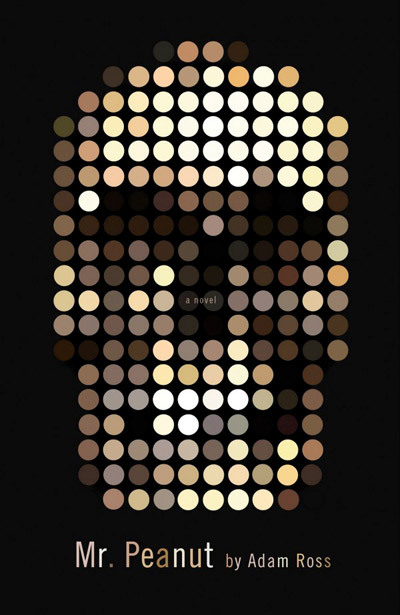This is a beautifully written, brilliant, extremely clever, major work.
Every page contains a comely sentence or phrase:
“the couple seemed like most married couples … perpetuating their relationship through games of low-grade deception, living a life of pure ambivalence, looking to all outsiders relatively happy.”
Or “the dual nature of marriage, the proximity of violence and love.”
Adam Ross is a writer who can bring it.
The question is: Is “Mr. Peanut” too clever? That’s for the reader to decide. Many readers will smile and be beckoned by the Borges-like structure, the matryoshka-doll architecture. Ross makes sure you see it, offering a series of metaphors for the ambiguous puzzle of the novel: the art of M.C. Escher; the films of Alfred Hitchcock; the winding, flow-charted pathways of video games. Reality is tessellated into dream, dream inside-outed into reality. And some readers will moan, “Oh, come on,” and throw it aside.
They shouldn’t. Above everything else — the spectacular language, the existential jokery, the knowing, look-Mom pyrotechnics — this is quite a novel.
It is also a clear-eyed, relentless, heartless depiction of the woe that is in marriage.
Marriage is the theme, or at least the repeated tale, of “Mr. Peanut.” We observe various marriages, and in each one, man and woman cannot understand.
One tale is based on the marriage, affair and 1954 murder trial of Dr. Sam Sheppard. I’ve seldom read such trenchant evocations of how it feels when you’ve lost your spouse and try everything to get him or her back, that sickening, humiliating sense of being lost in the woods, of desperate love desperate to hide itself, covering up while trying to resurrect love in the remote and receding spouse.
We get an exhausting look at a woman’s effort to lose 100 pounds. Then an even more exhausting trek on a trail in Kauai. Then, even more exhausting, the Sheppard story, a grand, Technicolor affair carried on within the achievement class of the 1950s.
Stories are told and retold, hinge on one another, depend and connect. That layering, that subsonic, towering buildup, is how “Mr. Peanut” works, and it is a marvel, right down to its final, doubtable twist.
There is a very detailed account of a pretty great class on Hitchcock, and how one character falls in love with another in the class, because of the class, because of Hitchcock, his tales, his women.
There’s also a mystery, and maybe it’s a murder mystery. Or two. And maybe the mystery is whether there ever was a murder, and how many, and who did them, who died, and who, if anyone, survived. We veer into the lives of David and Alice Pepin (a woman who, David thinks, “guarded herself against joy”), a 21st-century Manhattan couple facing depression and fat.
The sense of doom, of the catastrophe of love not returned, the haunting shame when marriages break — these are what stay with you after you finish “Mr. Peanut.” (You’re also trying to figure out exactly what is “real” and what “imagined,” and whether you can know.) If such a novel can be said to “say” anything, maybe that’s what “Mr. Peanut” is saying: We cannot know this life, or one another, or love, but these things, you can, you will, you are sure to know them.
Copy the Story Link
Send questions/comments to the editors.



Success. Please wait for the page to reload. If the page does not reload within 5 seconds, please refresh the page.
Enter your email and password to access comments.
Hi, to comment on stories you must . This profile is in addition to your subscription and website login.
Already have a commenting profile? .
Invalid username/password.
Please check your email to confirm and complete your registration.
Only subscribers are eligible to post comments. Please subscribe or login first for digital access. Here’s why.
Use the form below to reset your password. When you've submitted your account email, we will send an email with a reset code.